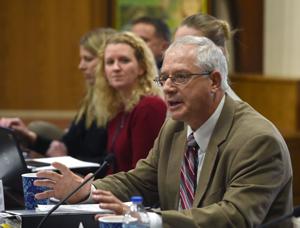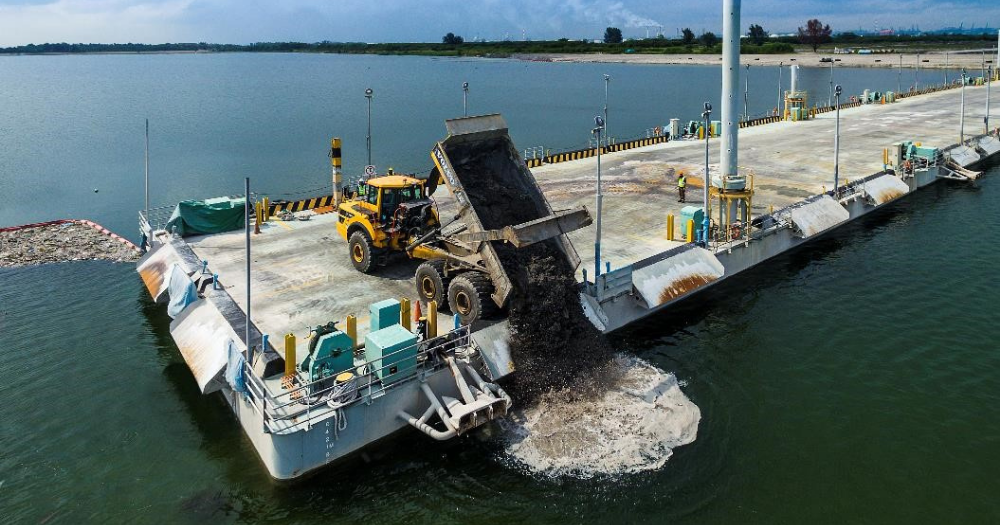
As Drs. Jorge Lagares-Garcia and Anna Matrachisia bent over the open abdomen of the patient on the operating table, the tone of the electrical cauterizing device sounded and the room filled with an acrid smell. A thin wisp of smoke curled over the patient, then vanished, and in minutes the smell evaporated.
As the surgeons reversed a temporary colostomy for the patient with help from a bovie pencil, which uses electrocautery to cut and seal tissue, the smoke it produced was sucked away and passed through a HEPA filter. Roper Hospital, where they were operating, and the Roper St. Francis Healthcare System as a whole is nearly surgical smoke-free and is working toward that designation.

The Ralph H. Johnson VA Medical Center in Charleston has been smoke-free for months. Novant Health East Cooper Medical Center requires smoke mitigation in its ORs, including "overhead evacuation systems with HEPA filtration, point of smoke filtration devices and extensive air quality monitoring," spokeswoman Carter Mello said.
The Medical University of South Carolina is on track to get there in the coming weeks. Trident Health said it is using smoke evacuation equipment in its ORs but did not specify if it is required. Surgical smoke is actually toxic, advocates say, pointing to research that found it contains dozens of different chemicals, including well-known cancer-causing agents like benzene.
The smoke also can carry live viruses and bacteria aerosolized from the flesh and has resulted in some infections. Surgical nurses, who typically spend more time in the operating room than the surgeons, are leading the push to eliminate the hazardous plumes. Nurse practitioner Brandon Gates (left) and Dr.
Jorge Lagares-Garcia work together to reverse a colostomy after liver and colon resection at Roper Hospital, Tuesday, Jan. 7, 2025, in Charleston. Already 18 states, including neighboring Georgia, regulate surgical smoke, but South Carolina is not among them.
However, legislation was introduced in the S.C. Senate on Jan.
14 to do just that. That the nurse-led push is succeeding and gaining ground internally in hospitals is a sign that the operating room culture is moving away from an unquestioning surgeon-dominated field to a more collaborative, team-oriented approach that values input from others and encourages them to speak up, surgeons said. Right from the beginning, surgical smoke was obvious and pervasive.
The first operation to use this kind of electrical cauterizing device was Oct. 1, 1926, by famed surgeon Dr. Harvey Cushing in Boston, who was attempting to remove a lemon-sized brain tumor while the device's inventor, William T.
Bovie, adjusted the controls on the device nearby, according to a short biography of Bovie. The smoke and fumes billowing out overwhelmed Cushing's surgical assistant, who had to scrub out. The surgery was otherwise successful, and the devices — often just referred to as bovies or bovie pencils after their inventor — became ubiquitous for their ability to cut soft tissue and control bleeding during procedures.
For years the emissions did not appear to generate a lot of concern in the OR. Dr. Bruce Crookes, chief of the Division of General Surgery at MUSC, said it wasn't really discussed when he was training more than two decades ago.
But perhaps it should have been, he said. As one of his surgeons put it, "When in your life have you ever been told that inhaling smoke was a good idea?" There have been times Dr. Heather Evans, chief of surgery at the Charleston VA, has been surrounded by smoke and felt the urge to cough.
"You think, 'This can't be good for me to be exposed to,'" she said. It wasn't the smoke itself that Kim Tuemler, an attorney who became a nurse, first noticed when she stepped into an operating room. "You're very conscious of the smell," she said.
"It smells like burning flesh." That is pretty much what it is, and working in an OR being exposed to it is the equivalent to smoking 27 unfiltered cigarettes, said Laurie Harvey, clinical manager of the operating room at Roper Hospital. In an essay she wrote in nursing school 15 years ago, she noted, "The hospital is smoke-free in every area except the OR.
" It's been common knowledge that the smoke was noxious, but "a lot of people didn't see it as a hazard," Harvey said. But nurses did. Harvey said she had a nurse friend who inhaled the smoke for 20 years, was diagnosed at age 50 with metastatic colon cancer and died a few years later.
She said she can think of of nearly a dozen more nurses off the top of her head that were all exposed to the smoke and had cancer. Smoke rises from a bovie pencil as Dr. Anna Matrachisia uses it to reverse a colostomy after liver and colon resection surgery at Roper Hospital, Tuesday, Jan.
7, 2025, in Charleston. Bovie pencils are used to cut and coagulate soft tissues. The cigarette smoking analogy hits home with Lagares-Garcia, Integrated Practice Network director of surgical services and digestive diseases at Roper.
His Spanish mother smoked two packs a day, but the rest of the family, "we all despised it," he said. Now, after thousands of operations over more than 20 years, "multiply that, and I'm pretty much smoking as much as my Mom," he said. The comparison is not far off.
A review article published in August in the journal Plastic and Reconstructive Surgery — Global Open noted at least 75 chemicals identified in the smoke, including several known to cause cancerous mutations in cells, such as benzene and formaldehyde. The smoke has also been shown to carry live viruses, such as human papillomavirus, HIV and SARS CoV-2, as well as bacteria. The problem is compounded by the fact that many of these particles are too small to be caught by masks, even N95 masks.
That means the patient on the table could also be at risk, Tuemler noted in an article she wrote last summer. She admits she didn't think too much about it until she attended a convention of the Association of periOperative Registered Nurses in October 2023. Surgical smoke is a big issue for the group, and for nurses in general, who tend to spend far more time in the OR than even the surgeons.
Those nurses are twice as likely to get respiratory issues as the general public, which some have attributed to the impact of surgical smoke. Tuemler's eyes were opened. "Wow, you know, this is bad," she thought.
She took the evidence from the conference back to the Charleston VA, where she presented the case for going smoke-free to her manager, and then to Evans, the surgery chief, who realized there wasn't a policy governing surgical smoke or requiring the use of the smokeless devices. Soon there was one, and the devices are now included in every equipment pack opened for surgery at the VA. "Although they do cost more, we felt like it was a reasonable thing for us to change our practice here and make them available in every single operation that is performed, just to try and reduce the risk to not just the patient, but everyone working in the operating room," Evans said.
MUSC and Roper are poised to follow soon. In 17 states, evacuation of that surgical smoke is regulated. Tuemler is hoping South Carolina is next.
Sen. Greg Hembree, R-Little River, is sponsoring Senate Bill 170 to require licensed facilities to have a smoke evacuation system to limit exposure. The legislation has been referred to the Senate Committee on Medical Affairs.
Tuemler used to work for him when he was the 15th Circuit solicitor and she made a pretty convincing argument for protecting those working in the OR, he said. "You don't want to make the ones taking care of you sick, that's not a good plan," Hembree said. The bill is "just the beginning of the conversation, but I think it warrants that look and that discussion.
" But there is already opposition to it from the S.C. Hospital Association, which opposes regulations requiring smoke evacuation.
"Hospitals invest significant resources to ensure the highest air quality in their operating rooms utilizing air filtration, smoke evacuation and other mitigation strategies," the group said in a statement to The Post and Courier. "Instead of a prescriptive mandate, we support evidence-based solutions that prioritize workplace safety without compromising patient care." Historically, the biggest obstacle has been surgeons and getting them to buy in, which Lagares-Garcia, as a surgeon himself, understands.
As they train and learn and become skilled at what they do, they become creatures of habit and rely on what works for them, he said. "They like their repetition, they like their routine," Lagares-Garcia said. If someone tries to disrupt it, to make changes, "the first thing I'm going to say is, 'I don't like it,'" he said, regardless of what it is.
Harvey, the surgical nurse, once broached doing something about the fetid smoke with a surgeon. He replied with a line from the movie "Apocalypse Now": "I love the smell of napalm in the morning." And there was the old-school perception by many surgeons — not all — that they were masters of their domain in the surgical suite.
Crookes recalls an old joke along those lines: "How does a surgeon change a lightbulb? He holds up the bulb and the world revolves around it." That is changing now, Crookes and Evans said. It comes from seeing surgery as a team effort.
"I think it speaks to a change in culture," Crookes said. "I think we're transitioning over to a much better culture where everybody has a voice, and everybody's voice is important. And I think that's good for surgery at large, and I think it's good for patient care at large.
" The best surgical environment is "where we really are taking all the steps that we can as a team to work together and to do the best work we can in the safest way possible, so that we bring the best outcomes for our patients," Evans said. A surgeon demonstrates an electrocautery device used to cut and seal wounds to prevent excessive bleeding during operations. The device generates a considerable amount of smoke, which research shows could contain a number of toxic compounds.
Part of that also comes from the staff members and nurses themselves, many of whom are younger and feel more empowered to speak up, Lagares-Garcia said. He can cite his own daughter, a pediatric wound care nurse, as an example. "My daughter as a nurse has very interesting opinions, and she's going to let me know" about it, he said, laughing.
Part of that change still requires surgeons to buy in, and Harvey at Roper credits Lagares-Garcia with setting an example and bringing others along. As he works across from Matrachisia on the colon cancer patient, he zips through the steps to reattach the colon while cracking jokes constantly with everyone else in the operating room. Using a smokeless bovie doesn't seem to slow him down at all.
"For me, if they tell me, 'Hey, we have a new bovie that can aspirate smoke, and you don't smoke cigarettes every operation,' I was like, 'Sign me up,' " Lagares-Garcia said. "I got no problem with it." Ultimately, it is about protecting everyone against not just the smoke, but what could come afterward, such as lung or colon cancer, Tuemler said.
She has already survived breast cancer, and "it was a horrible experience," she said. "I wouldn't want to have it again. I wouldn't want anybody else to have it.
".















